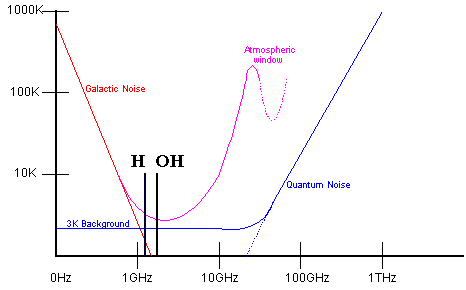
A frequency of 1420 MHz corresponds to
21 cm wavelength -- this the location of
a fundamental vibration of hydrogren atoms.
At 1660 MHz -- 18 cm -- there is another fundamental
vibration, this time of OH molecules.
At frequencies below about 1000 MHz, background
radio noise from the galaxy is quite loud.
Above about 10 GHz, the Earth's atmosphere is
opaque; at higher frequencies, there is a fundamental
limit of sensitivity given by quantum noise within
atoms.
Also, at short wavelengths (like visible
light), interstellar dust absorbs
electromagnetic radiation, which means
signals have a harder time propagating.
[Aside: This is Olbers' paradox.]

Thus, the region between around 1 GHz and 10 GHz is
ideally suited for long-distance communication.
It is thought that any technological civilization
would recognize the importance of the H and OH
lines (as important chemical species). This
frequency range has also been called
the
cosmic water hole, a term which has
both chemical and social connotations
(think about this
picture).
This is the region where radio searches for
communicating civilizations are carried out.